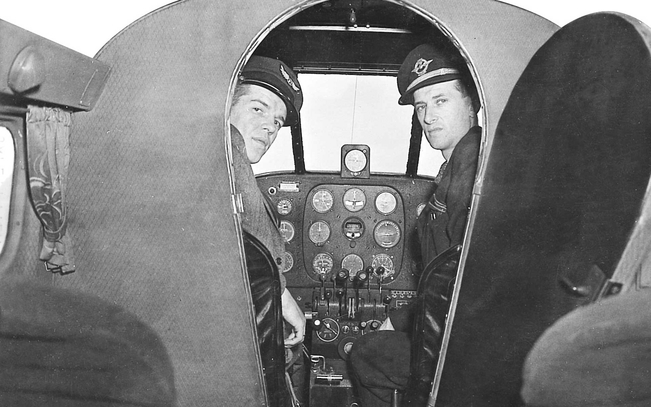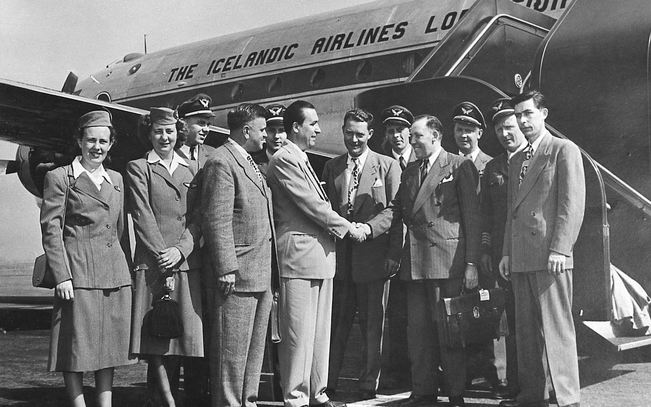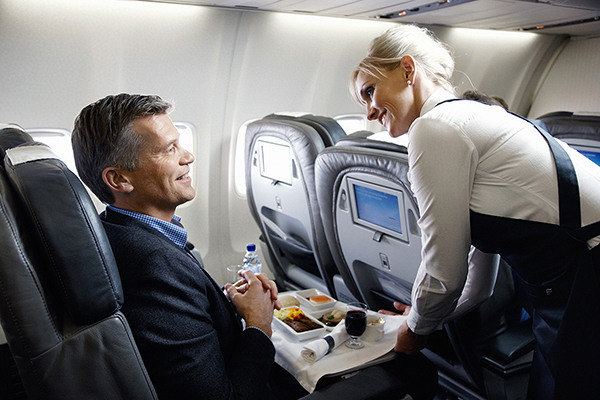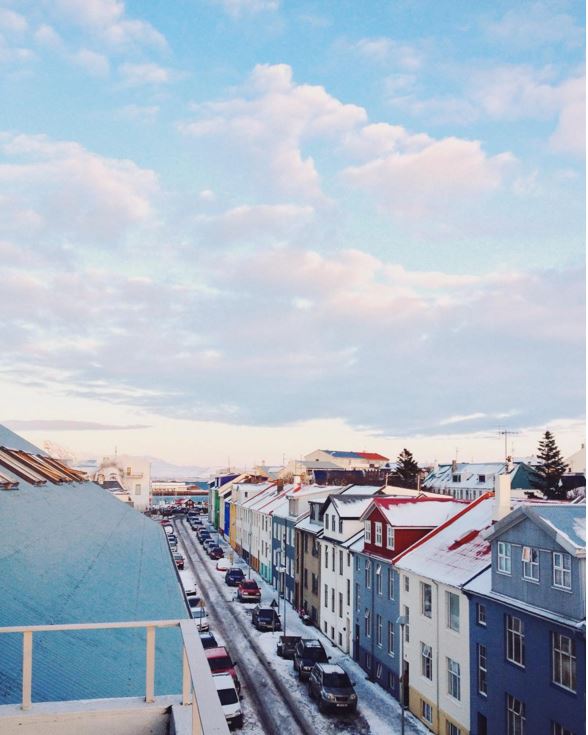REVIEW BY RON BERNTHAL
In 2014 more than one million people visited Iceland, three times the country’s population, and figures were expected to increase by another 76% in 2015. Needless to say, this large increase in business and leisure travel to Iceland has helped the country’s economy, which was shattered in the 2008 worldwide recession, when Iceland’s banks and economic institutions were rocked with deep losses. Today, Iceland and its major air carrier, Icelandair, are enjoying the success that comes when a country’s various elements – scenery, cuisine, fashion, design, safety and a modern infrastructure – have become of-the-moment trends among millennial travelers.
Founded in 1937, Icelandair was a fledgling airline when it was founded in 1927 in the small town of Akureyri on the north coast of Iceland. In 1940 the company moved its headquarters to the Iceland’s capital, Reykjavík, and has been the country’s major airline since then, benefiting greatly recently from Iceland’s tremendous increase in passenger traffic from North America and Europe, its biggest international markets. Icelandair’s pioneering low-fare services across the North-Atlantic commenced in 1953, opening up the country to adventurous travelers, including many young backpackers, who discovered Iceland’s amazing glaciers, waterfalls, and mountain scenery.
Americans actually constructed the present international airport in Iceland in an area called Keflavík during World War II, when the U.S. Army Air Forces desired an airfield in Iceland capable of operating heavy bombers and fighters. Construction began in 1942 and by March, 1943, service for transatlantic military flights was started. At the end of the war the airport facilities became a refueling stop for the international flights between North America and Europe, and when the U.S. military withdrew in 1947, the airport was handed over to Iceland and renamed Keflavík Airport, and operated by both countries for transiting civil and military flights.
The U.S. military returned to Keflavík in 1951 under the auspices of NATO (Naval Air Station Keflavík) and the joint operation continued until 2006, when the military installation was handed over to the government of Iceland. Because Iceland has no military of its own, there were some protests against keeping a NATO presence in the country, but now that the airport has been expanded, and the new terminal complex is dominated by international departures and arrivals, the NATO-base issue has become moot.
Fortunately, Kefkavík Airport’s 10,000-foot-long, 200-foot-wide runways are long enough to support any type of aircraft, so there was more than enough space to harbor several international flights that had to land in Iceland on September 11, 2001, when the U.S. government ordered all domestic airports to shut down for security purposes.
My first flight to Iceland was in 1973, when I purchased one of Icelandair’s very affordable round-trip flights from New York to Luxembourg, with a stop-over in Iceland. The airline still offers stopovers in Iceland on flights to more than 20 European destinations from the U.S., up to seven days stopover in one direction are permissible with no additional airfare. I returned to Iceland in 1993 for a newspaper travel story, and this year, in mid-March, to cover DesignMarch, the country’s annual Iceland Design Festival in Reykjavík, the country’s capital.
My flight started at Newark International Airport, with check-in for Icelandair’s non-stop evening flight to Reykjavík at their priority check-in line in Terminal B. For Saga Class passengers the boarding pass allows entry into TSA’s premium ticket lanes, and admittance to Lufthansa’s business class lounge, which Icelandair arranges for its Saga Class passengers. The Lufthansa in EWR’s Terminal B is somewhat small, with about 25 seats, and space for 12 smaller seats computer-style tables. Free WiFi is provided for lounge guests. A hot and cold buffet and self-service bar is also available.
Boarding began at 7:15 pm, and a separate lane was available for Saga passengers. The B757-200 on this flight has three sections (Economy, Economy Comfort, Saga) seating 183 passengers with a 3×3 configuration in economy and 2×2 seating in Saga class for 22 passengers. Although the Saga seats were not full-recline, they do have 40” pitch with ¾ recline, and seat-back entertainment screen with a full menu of movies, TV shows, games and flight information. Shortly after stowing gear in the overhead an amenity kit was provided, a Spanish cava was served, and soon after that, at 7:45 the aircraft departed the gate. After a relatively short wait, Icelandair’s flight 622 to Reykjavík lifted off at 8:00 pm, just five minutes behind schedule.
Dinner was a nicely baked salmon (possibly Icelandic) with vegetables and desert, accompanied by a dry white wine from France. After watching a movie and a short nap, I heard the flight attendants moving about the cabin serving croissants, juice and coffee, announcing to the passengers that we would be landing in Iceland shortly. As we began our early morning descent towards the airport I was anxious to look out the window, eager to see the terrain from the air, but of course it was still winter in Iceland, the sky quite dark, with drops of rain on the window, and the only lights visible were streetlights in the small villages that hug the rocky coastline near the airport.
The flight landed at 6:00 am local time, I gathered my belongings, walked quickly to the passport windows, fully staffed and with no lines, and within fifteen minutes I had picked up my rental car right outside the terminal and was on the highway to Reykjavík, 30 miles away. By the time I reached the outskirts of the city the sky was becoming eerily brighter, no sun yet, but a faint orange glow appeared above the city, illuminating the snow covered landscape and the cozy house lights of early rising Icelanders.
Each aircraft in the Icelandair fleet is named after 16 Icelandic volcanos, including Eyjafjallajokull, Heklaaurora, and Helgafell. Passengers boarding an Icelandair plane can see a plaque with the name and illustration of the volcano the aircraft was named after.
For information on non-stop flights to Iceland from North America contact:
Icelandair
www.icelandair.us








